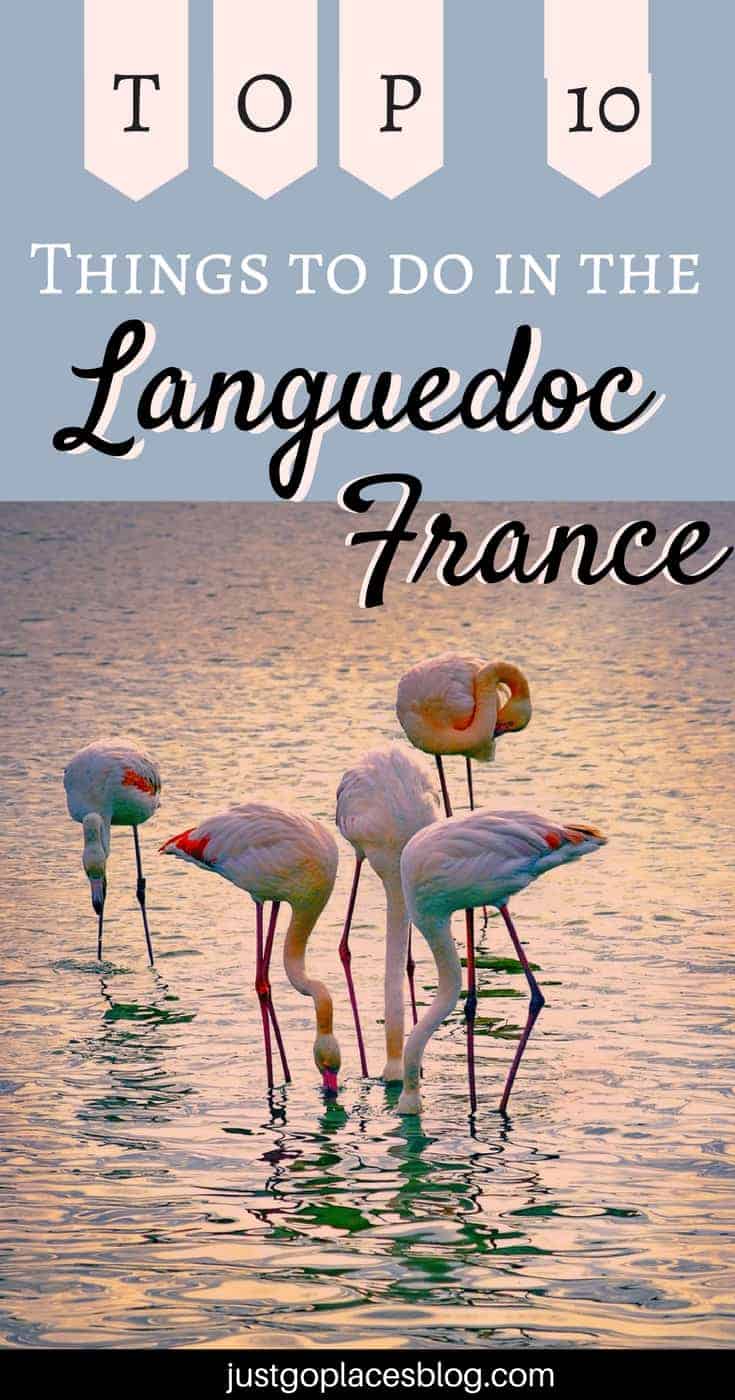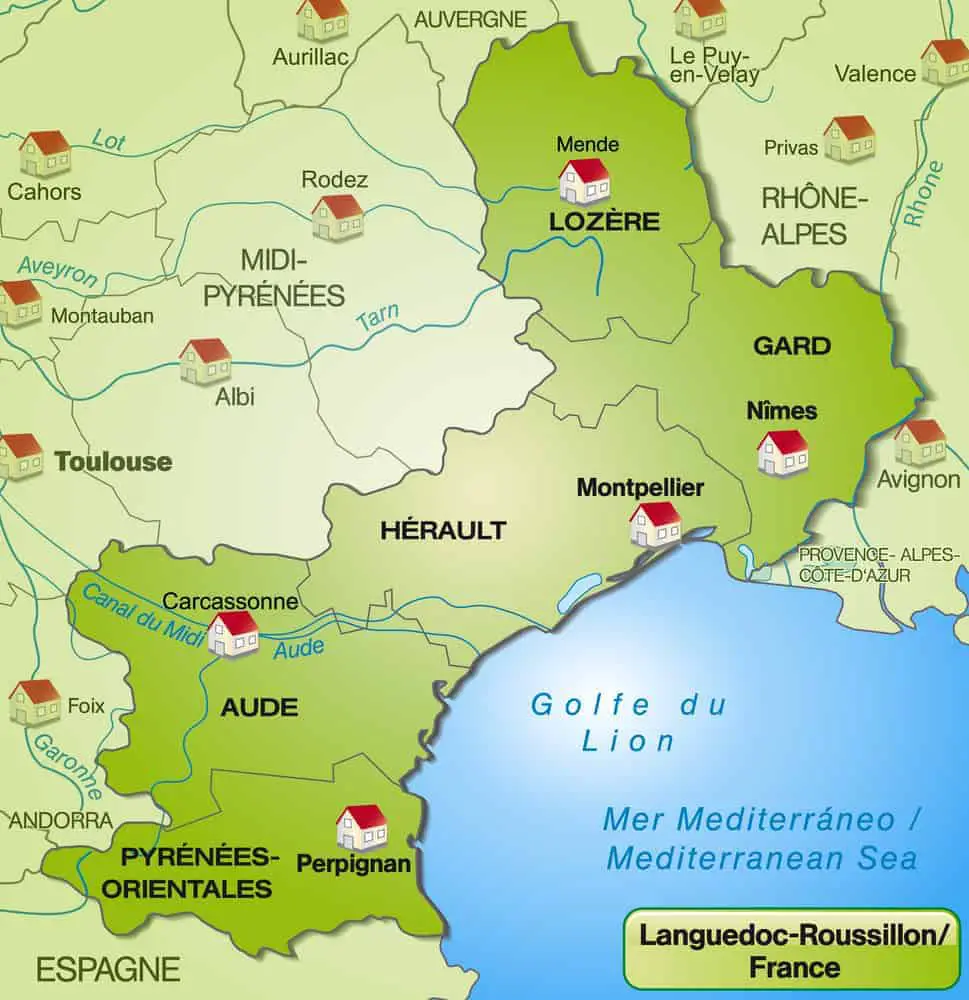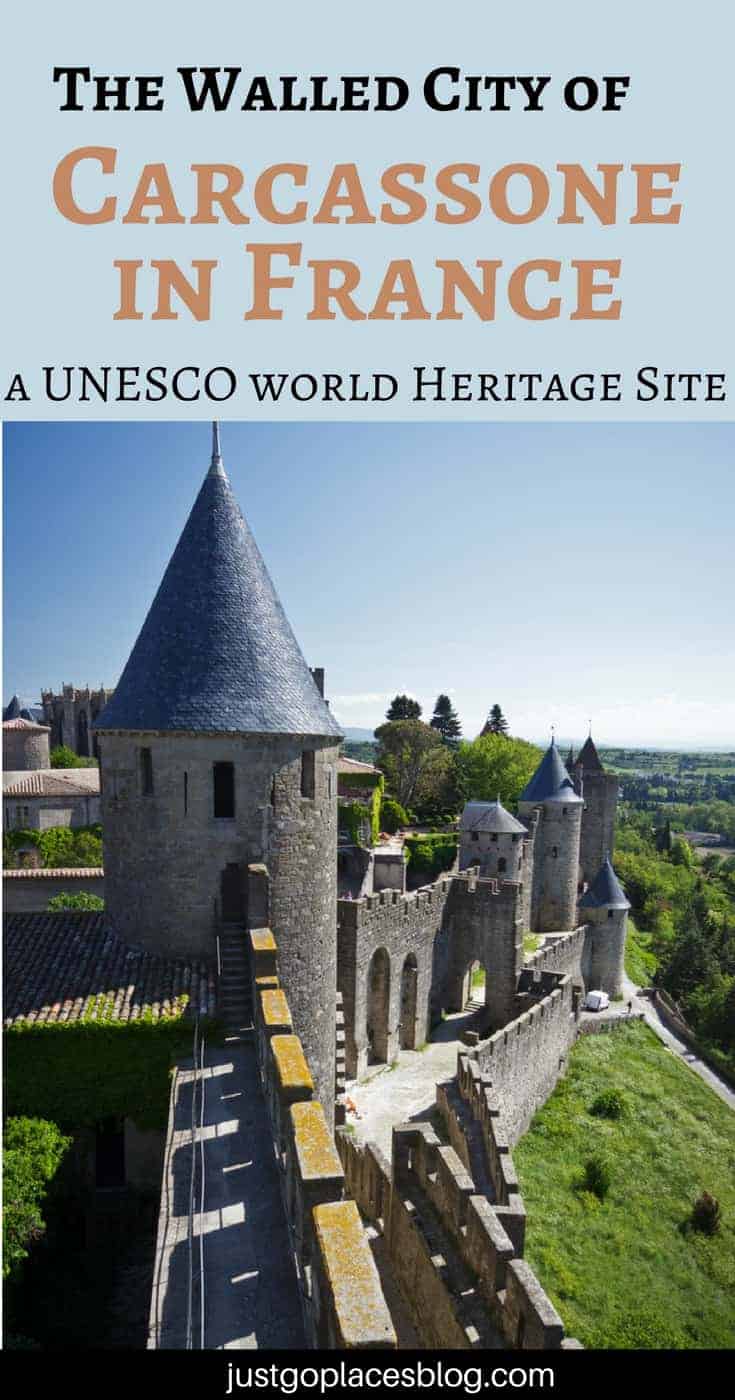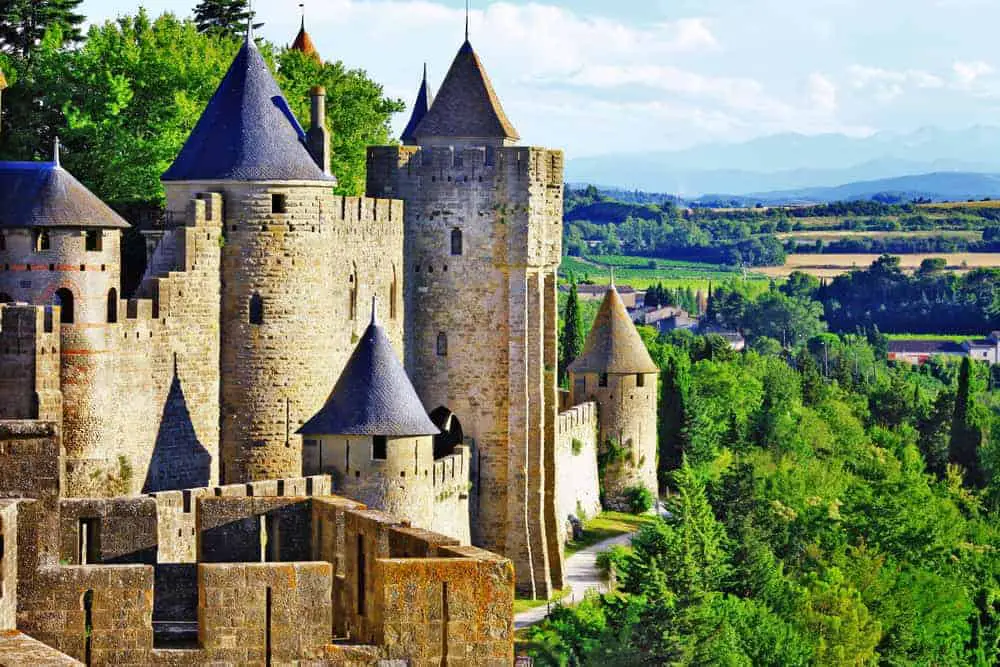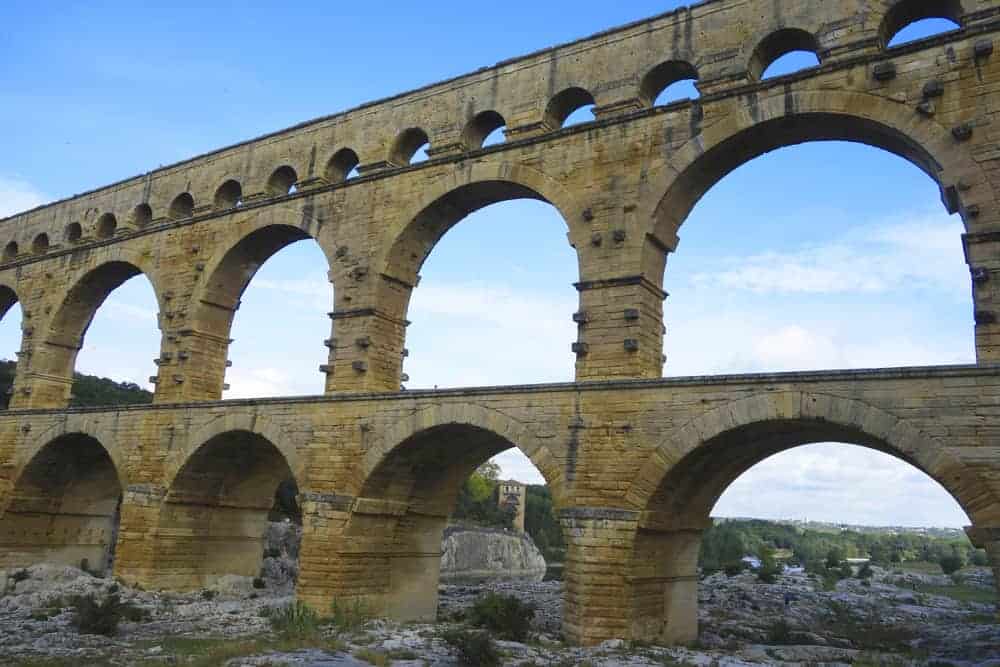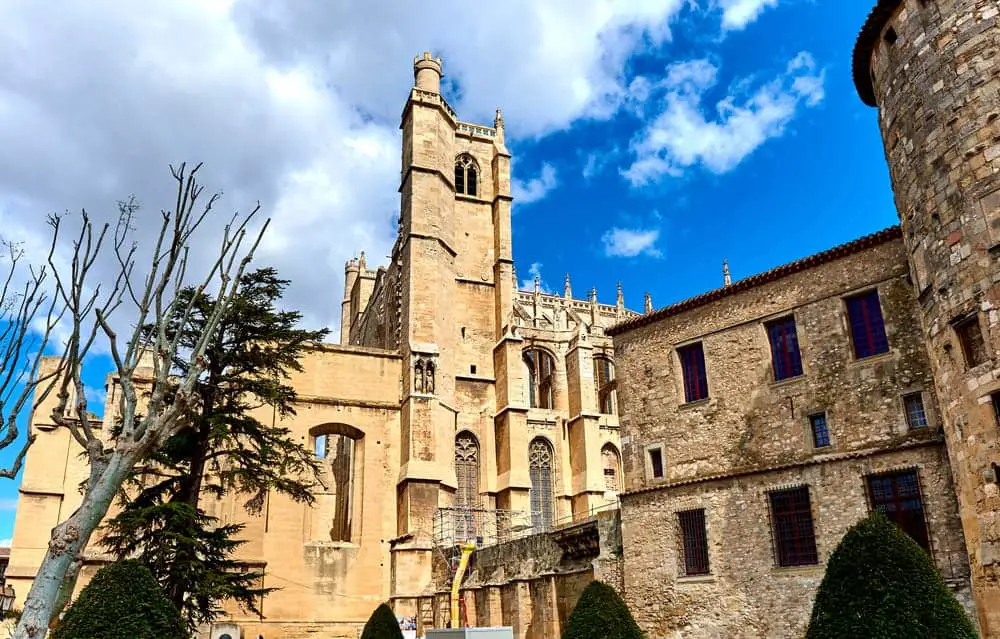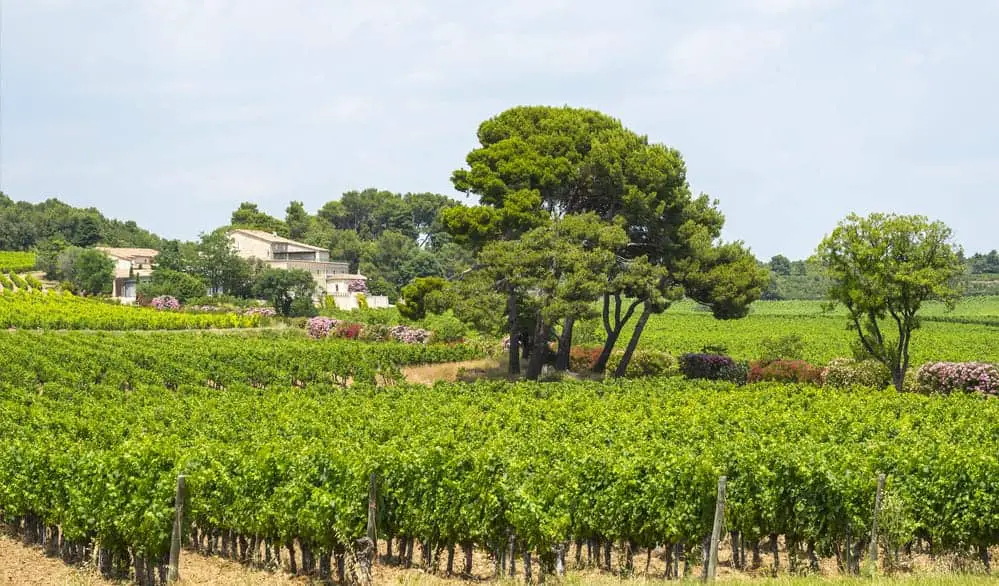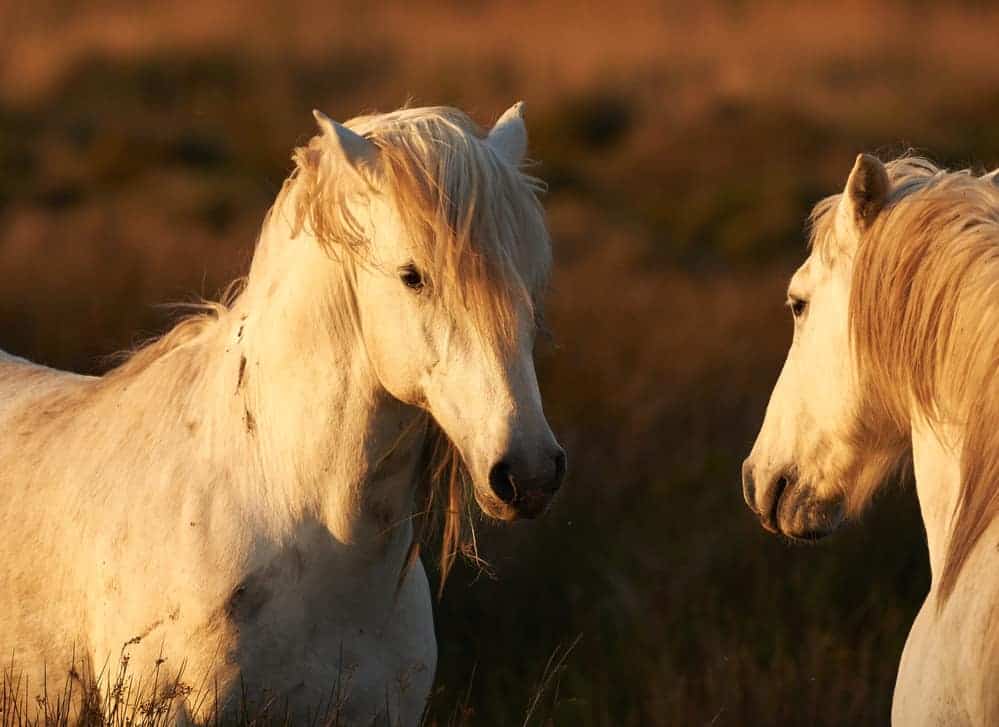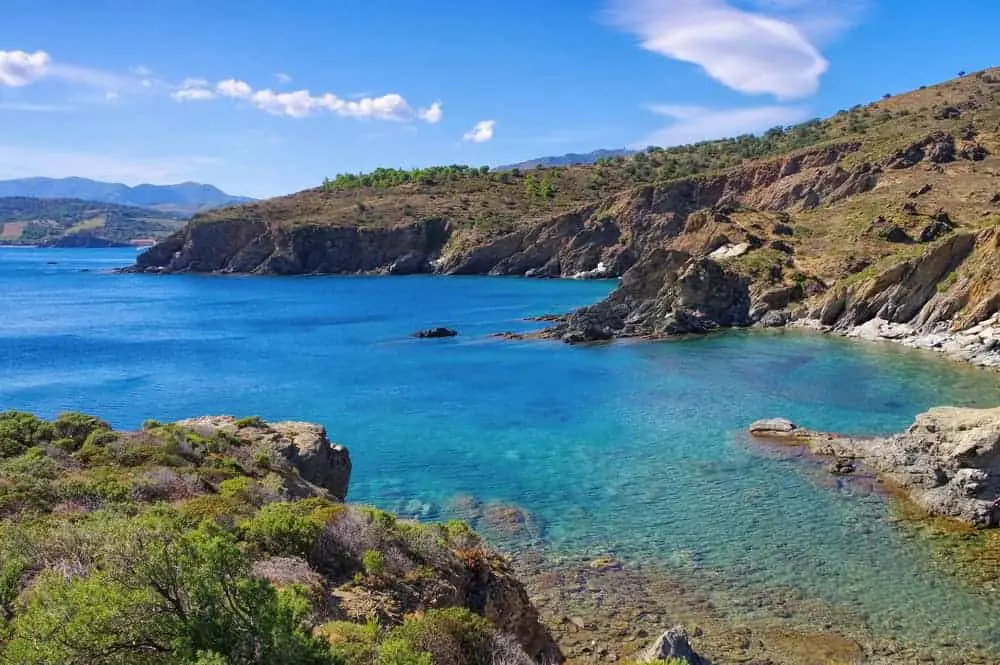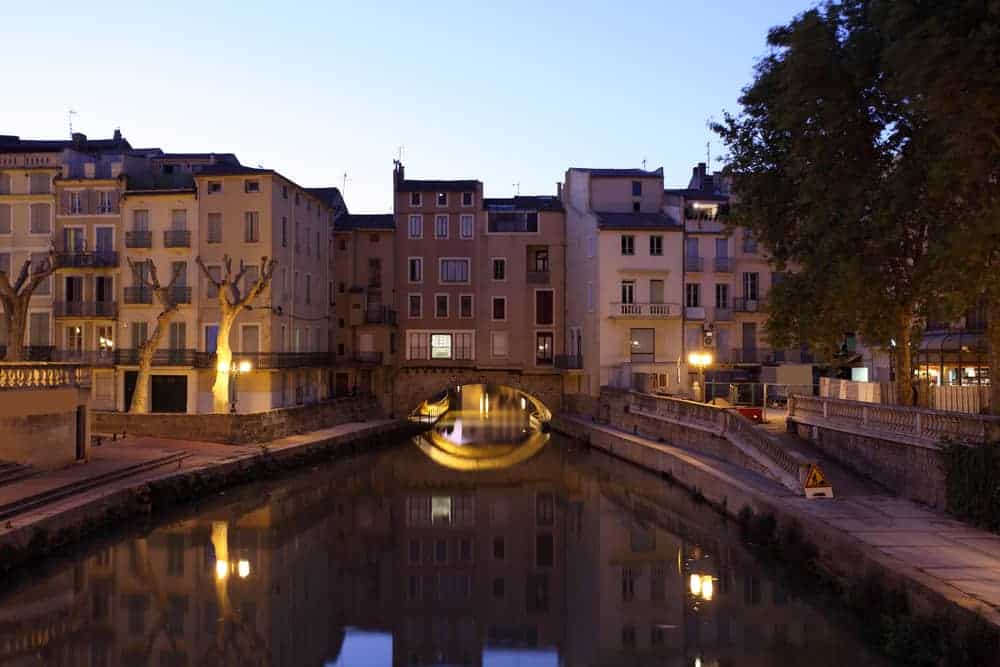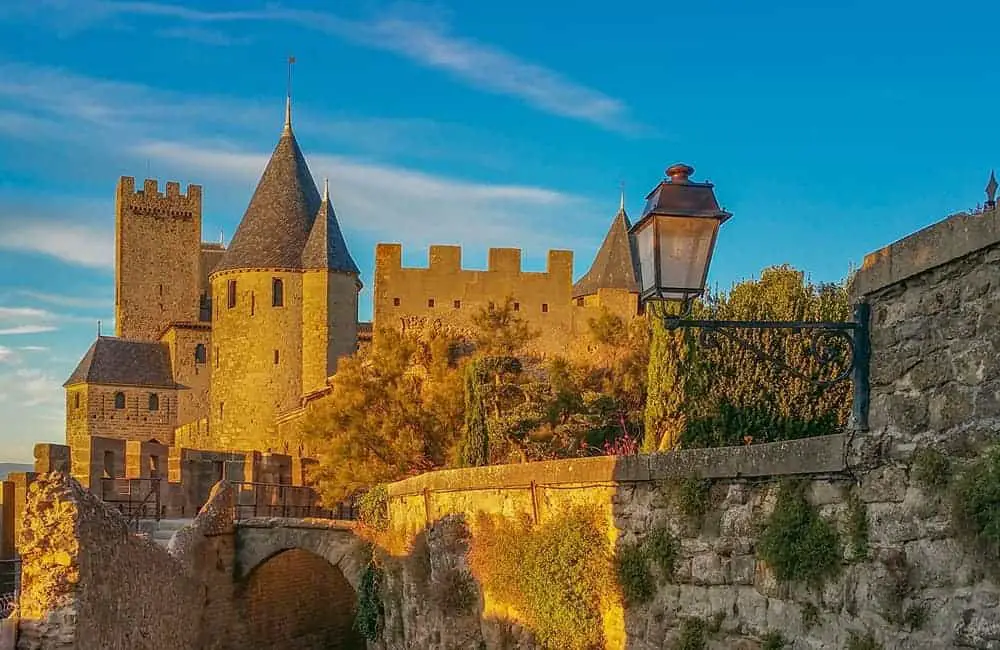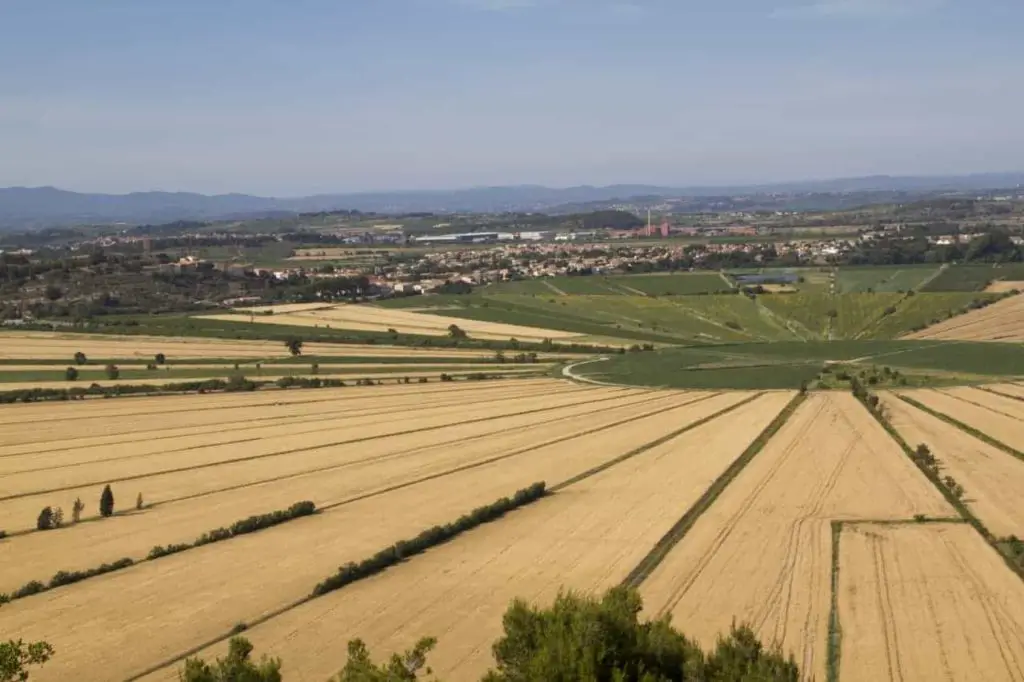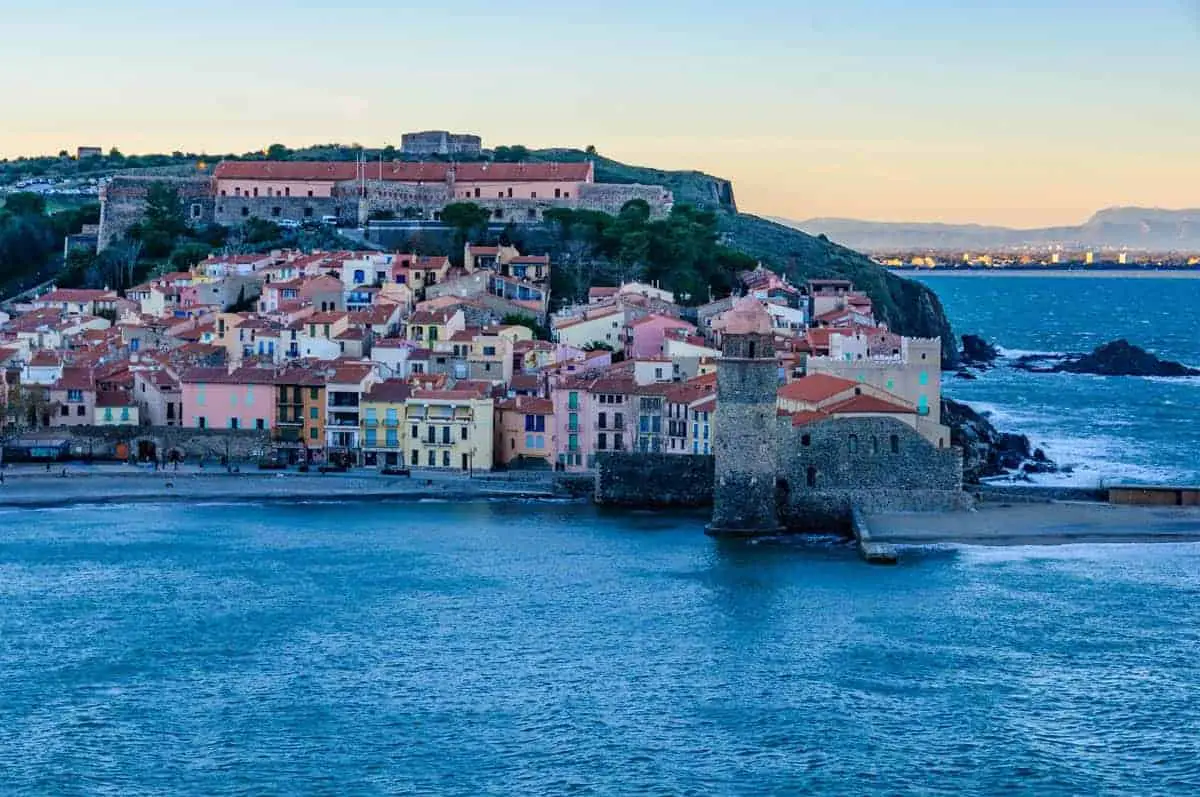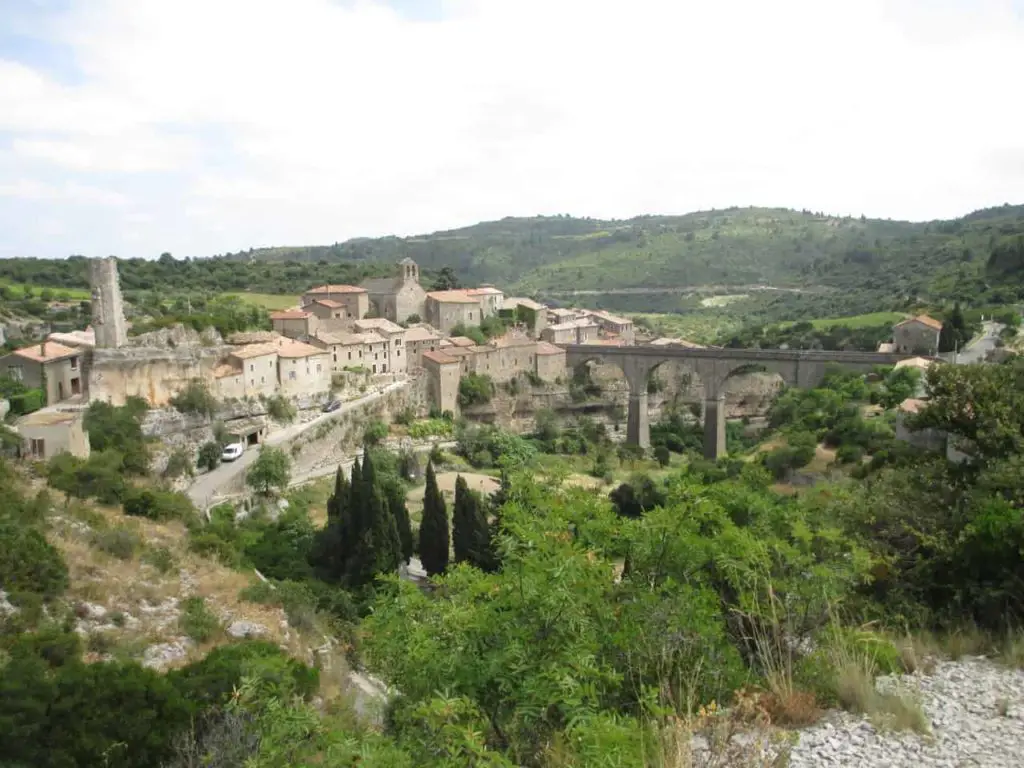Contents
Where is the Languedoc-Rouissillon?
The Cathars
Occitanie
Getting To the Languedoc-Roussillon
Things To Do in the Languedoc- Roussillon
What To Do in Carcassone
Canal du Midi
Other Places to Visit in Languedoc Roussillon
Food and Drink
Nature
Beaches
Tips for Visiting the Languedoc-Roussillon
Cathars, Castles & Carcassonne
Montady
The small town of Montady is found perched on a hill in the middle of Languedoc-Roussillon. With the Canal du Midi, Narbonne, and Carcassonne well within a few hours, there is plenty to do in this gorgeous French town.
One of the most unique features of the town is the Étang de Montady, which was a way to control the water. Somehow, the inhabitants (in the late 1200s) found a way to build a drainage system in the lake.
If you look closely, it even looks like a sink with a drain. The étang allowed the locals to not lose many crops or harvests throughout flooding years. It’s a marvel of engineering, and hey, it’s pretty as well!
The Languedoc-Rouissillon
Languedoc-Roussillon region (now Occitanie) was one of the first places I visited in France years ago and I love going back there. Its beautiful nature, charming historic towns, and layback atmosphere will definitely make you fall in love with France.
This area is so different than the busy metropoles like Paris or the much more touristy and posh nearby Provence region. Here you can get to know the more authentic France, not yet overrun by foreign tourists.
The region is extremely diverse. You will find historic Roman cities as well as long sandy beaches with thriving coastal towns. Languedoc-Roussillon is also famous for its wines and some of France’s major vineyards can be found here.
Some of the must-see highlights in the region include the medieval Carcassonne castle and historic towns like Montpellier, Perpignan, Nimes, Narbonne, Sète or the smaller coastal town Collioure.
My personal favourites in the region are Pont du Gard, a 2000 year old Roman aqueduct that was once part of the extensive and very impressive water channel system, and the 11th century Fontfroide Abbey near Narbonne.
– by Jurga from Full Suitcase and on social media at ![]()
Collioure in the French Vermeille
Minerve
Walking through the narrow streets of Minerve is like stepping into the pages of a children’s storybook but today’s beauty disguises a gruesome past.
The quiet village, around 50 kilometres from Carcassone, came under attack during the Albigensian Crusade in 1210 when a number of Cathars (non-Catholics) from Beziers took refuge in Minerve. After a six week siege, the village was forced to surrender and 140 Cathars were burnt at the stake.
To learn more about the bloody events of the past, a visit to the Hurepel Museum is a must. Here, the story of the siege is told in sixteen clay dioramas made by local artisans.
Today Minerve is classified as one of France’s most beautiful villages and it’s easy to see why. Perched on a rocky peninsula at the meeting of two rivers and alongside deep gorges, Minerve’s setting is picturesque.
A tall, narrow tower and a small section of wall is all that’s left of the medieval fortifications, whilst the 12th century church and the impressive double-arched bridge that spans the River Cesse are the other major sites in the village.
But for me, the real attraction of Minerve are the cobbled streets lined with centuries-old stone buildings some now serving as shops, boutiques and cafes.
Sitting on a shady terrace sipping a drink and admiring the views you can’t help but be thankful you’re visiting today and not back in 1210.
– by Carolyn Schonafinger who writes at Holidays To Europe and on ![]()
This site generates income via partnerships with carefully-curated travel and lifestyle brands and/or purchases made through links to them at no extra cost to you. More information may be found on our Disclosure Policy.

